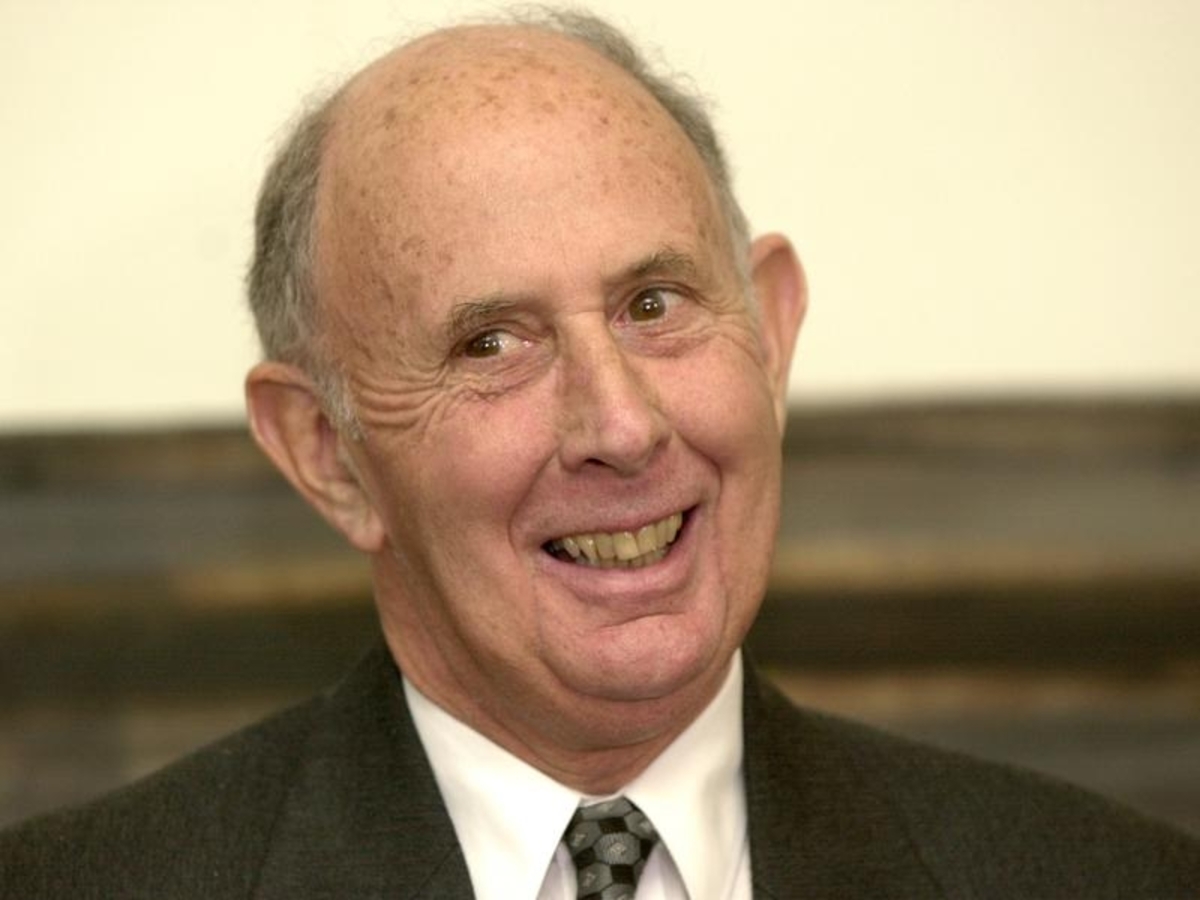
It didn't always sit well with John Landy that he was responsible for the finest and most selfless Australian sporting moment of the 20th century.
By his own admission, he would have preferred to be remembered as simply a good runner.
Or for becoming the 26th Governor of Victoria, an office he discharged with the same dignity and good sense that characterised his life, or for his work on the Australian Sports Commission, or his writings on nature.
Or perhaps even for creating one of his country's finest butterfly collections.
John Michael Landy, who died on Thursday aged 91, was one of the greatest middle-distance runners of his era.
He was also a capable scientist, an author, a humanitarian, a husband and a father.
But it was for his athletic prowess, a talent developed as a boy chasing butterflies through paddocks around Melbourne, that Landy first came to prominence.
Landy initially took up competitive running to help him get fit for football, only becoming serious about it after making the Victorian athletics team in 1951.
Within 12 months he was on the Australian team for the Helsinki Olympic Games, and a couple of years later became deeply engaged in a battle with Englishman Roger Bannister to become the first man to achieve a feat thought to be beyond human capability - to run a mile in under four minutes.
As Landy and Bannister rolled on toward the magical mark, their ambition became one of the most eagerly anticipated events in the history of track and field.
In the end it was Bannister who won that "race" stopping the clock in a state of near collapse at 3 minutes 59.4 seconds at Oxford on May 6, 1954.
Less than two months later in Finland, Landy, who had threatened the mark several times that year, breezed past Bannister's world record, running 3:57.90.
Those two, sub-four-minute runs preceded the 1954 Empire Games in Vancouver where Landy and Bannister, the world's two fastest milers, met face-to-face in a showdown billed as the Race of the Century
The Englishman won, outrunning and outfoxing Landy who, at a vital stage, looked for him over his left shoulder as Bannister made his move on the right.
Bannister retired from running in 1955 to concentrate on what became a celebrated career as a neurologist, later writing about Landy in Sports Illustrated, describing the Australian as "an athlete faster, neater and more generous than any other."
Landy, meanwhile, pushed on to the 1956 Melbourne Olympic Games where he was the favourite to win the "metric mile", the 1500m.
It was in the lead-up to those Games that Landy earned his almost mythical place in Australian sporting folklore.
Running in the Australian Mile Championship in 1956 Landy was in a winning position when fellow athlete Ron Clarke tripped and fell in front of him with about a lap and a half to go.
Landy leapt over Clarke and then turned back to help his rival to his feet, a gesture that cost him valuable seconds and around 50 metres.
After checking on Clarke, he got going again, circled the field and won a race that assured him a place in the Australian Olympic team.
In time, Landy came to view it less gloriously than most, describing it as "that silly race when I whizzed back to Ron Clarke".
"I reacted on the spur of the moment. I ran down his arm with my spikes when I was jumping over him. That's why I went back.
"A lot of people seemed to think it was the most significant thing I ever did in running.
"It wasn't."
Nevertheless, a statue depicting the incident was erected 50 years later outside Melbourne's Olympic Park and, in 1999, the Sport Australia Hall of Fame declared Landy responsible for the nation's Finest Sporting Moment of the Century.
Landy duly ran at the 1956 Melbourne Games, finishing third behind the Irishman Ron Delany.
It was to be the last shot Landy would have at a major international title.
Landy went on to work in the field of agricultural science, a subject he studied at Melbourne University, and held various positions in sporting and community organisations.
In 2001 he became the Queen's man in Victoria, serving for five years with typical generosity and openness.
The same qualities, perhaps, led Landy to donate his butterflies, some 10,000 of them, personally collected and catalogued, and estimated to be worth at least $1 million, to the Australian National Museum in 2017.
Landy leaves his wife Lynne and children Matthew and Alison.







